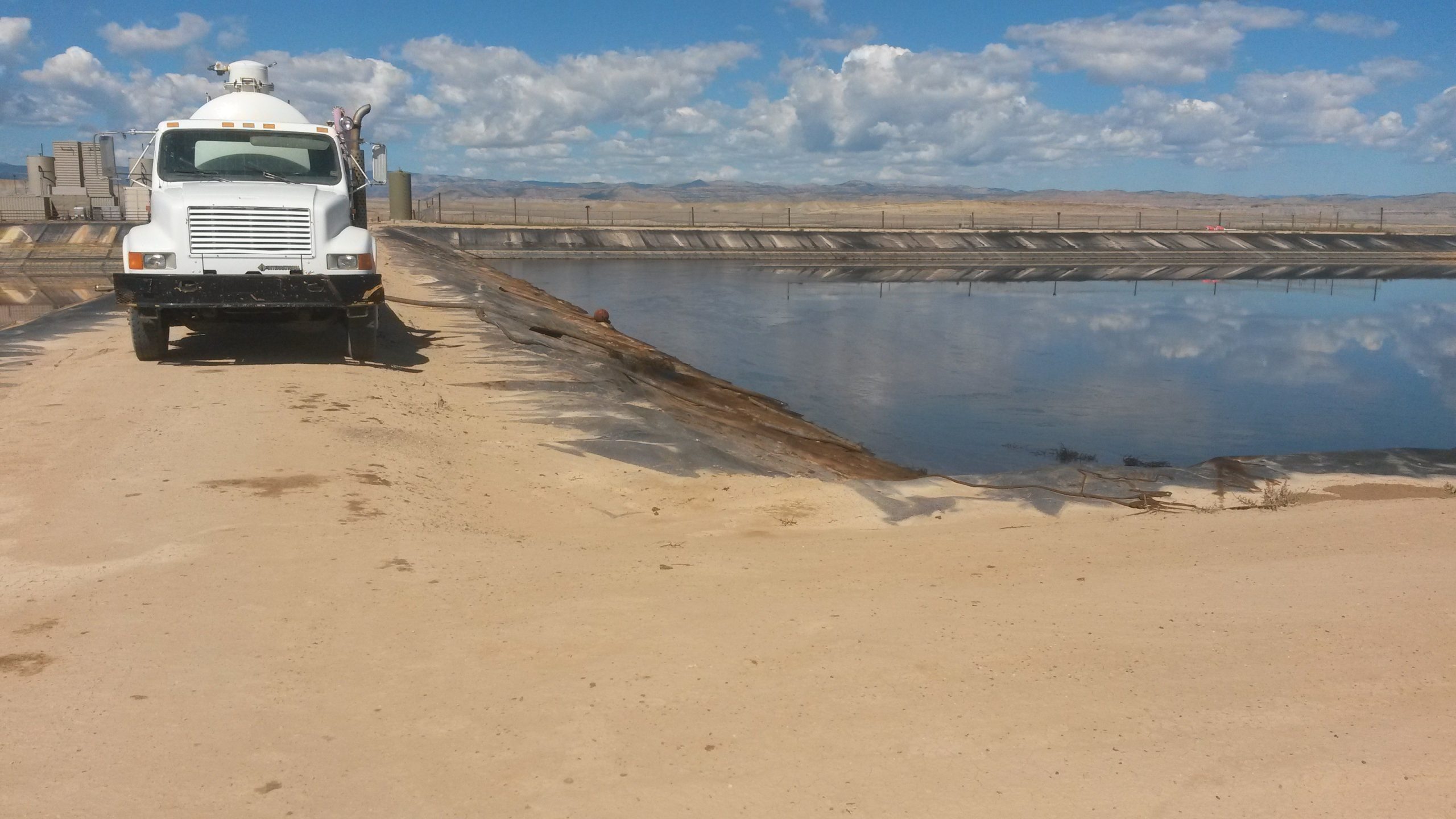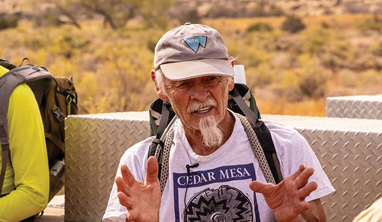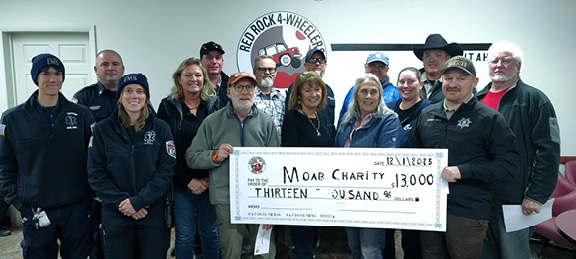Some information may be outdated.
The owner of a facility that accepts tainted wastewater from the oil and gas industry is asking state regulators for more time to install pollution control equipment at its Danish Flats evaporation ponds northeast of Moab. But Grand County Technical Inspector Lee Shenton suggests that the county council may want to consider a proposal that asks the Utah Division of Air Quality (DAQ) to enact hard deadlines for Oilfield Water Logistics.
Under the terms of an August 2014 state order, former owner Danish Flats Environmental Services had until this week to install controls that limit emissions from the open-air evaporation ponds, which are located about halfway between Moab and Grand Junction, Colorado.
Oilfield Water Logistics, which purchased the facility in October 2014, is more than halfway through construction work on the emissions-control project, which was originally projected to cost somewhere between $1.5 million to $2 million. But Shenton said the Texas company won’t meet the deadline to get the new equipment up and running.
With all eyes on the calendar, company officials reached a new agreement with the DAQ last December that allows them to submit a revised proposal for a smaller and less expensive system.
To be entirely fair, Shenton said, the company is following the state’s procedures to delay installation of the new equipment by up to two years.
“But it’s certainly disappointing that all of the work that the county and the planning commission have put into achieving an ordinance that would be effective for these facilities … is circumvented by using the state procedures by getting another 18 to 24 months to install the emission control equipment,” he said.
Oilfield Water Logistics could not be reached for comment.
But Jay Morris, the DAQ’s minor source compliance manager, said it appears that emissions from the evaporation ponds have fallen in the time since Oilfield Water Logistics acquired the facility.
He attributes part of the steep dropoff in truckloads of hydrocarbon-laden “produced water” from oil and gas wells to the global plunge in oil prices.
“There have been thousands of layoffs in the oil and gas industry, and production is down significantly,” Morris told the Moab Sun News. “When that’s your main customer, you’re kind of at the tail end of that.”
At the same time, new technologies are doing a better job of cleaning up produced water, and more operators are reinjecting that water back into their oil and gas wells.
“(The dropoff) is probably a combination of all of that,” he said.
The division’s original 18-month compliance timeline took effect under the former owner, which expanded its operations without state approval, and was then fined $50,000 for violating the law. Oilfield Water Logistics has since informed the DAQ that the facility is no longer a major polluter under Title V of the federal Clean Air Act.
“It will be permitted as a minor source, assuming that all of the numbers are current and accurate,” Morris said.
Shenton said it’s understandable that the company wants to delay a potentially significant investment in emission controls for as long as possible.
“It looks to me like they’re going to take advantage of the global slowdown in oil and gas to do this construction while business is slow anyway,” he said.
With the continued drop in business from the oil and gas industry, Danish Flats’ new owner is hoping to accept other kinds of wastewater that don’t contain hydrocarbons. If it succeeds in doing so, the shift could reduce emissions of air pollutants like benzene and methanol even further.
The Utah Division of Water Quality previously gave the company permission to use roughly half of the facility’s capacity on briny wastewater that does not carry oil or gas residues, which could cut Danish Flats’ total estimated emissions in half.
“They have a point,” Shenton said. “There will be a significantly lower amount of hydrocarbon emissions from that facility. However, I cannot say with certainty what their intent was, but I can tell you based on my background that they shouldn’t have to take another 18 months, in my opinion.”
Grand County Council member Chris Baird said the DAQ wouldn’t have acted in the first place if county officials hadn’t applied some pressure on the agency.
The county has been dealing with the issue for eight years now, he said, and it seems silly to give the facility another two years to fully comply with the law.
“It’s a case where we’ve got to keep the pressure up,” he said.
One big issue with the evaporation ponds is the cumulative effect they have on regional air quality, Baird said, noting that their emissions contribute substantially to ground-level ozone pollution.
“It’s really a statewide issue, and to me, I think it’s a key component to keeping this area and really the entire state in compliance,” he said.
In the past, the county intentionally withheld an operational certificate for a 14th evaporation pond at the facility, and Shenton believes that move may have gotten the facility’s attention.
“We’d like to think that was at least in part responsible for bringing them to the table to negotiate with DAQ,” he said.
In the future, Shenton said the county may want to consider the possibility of rescinding the operational certificate for the pond. It could do so on the grounds that if it won’t be used for oil and gas waste, it won’t fit into the conditional use permit.
“At this point, the existing ordinance does not allow Danish Flats to accept that non-oil and gas material,” Shenton said.
However, county officials have also recommended that the planning commission and council should consider a new ordinance that could clear the way for the facility to bring in other kinds of wastewater, such as briny fluids, which are often produced in salinity-control projects.
Grand County Council member Lynn Jackson quickly embraced the idea, noting that it could boost the company’s revenue stream and, in turn, increase funding for the new emissions-control equipment.
“If they’ve got half the capacity they’re not using, they’re struggling with oil and gas industry revenues … and we can do something to help them increase revenues out there, it helps get this monitoring equipment in place,” Jackson said. “It sounds like a win for the county.”
“Produced water” facility won’t meet state deadlines
It will be permitted as a minor source, assuming that all of the numbers are current and accurate.
Appreciate the coverage? Help keep local news alive.
Chip in to support the Moab Sun News.





